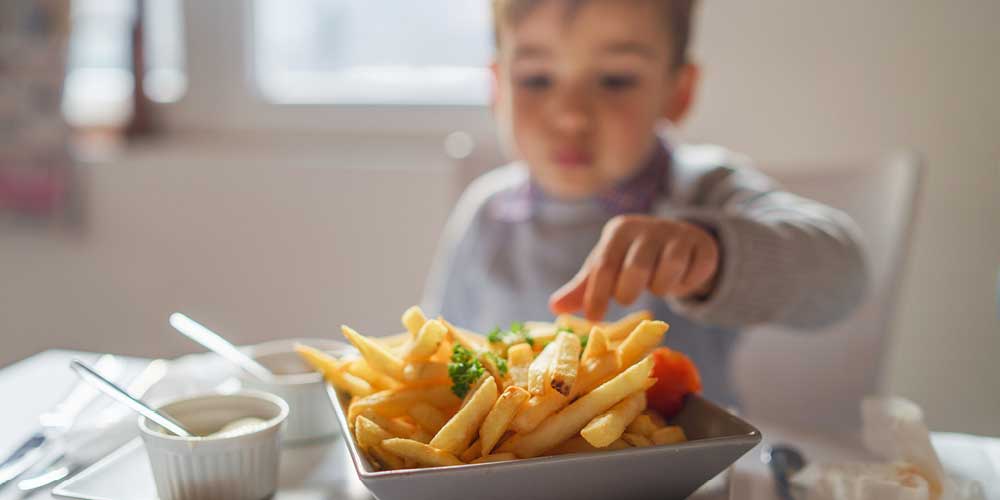
Fries have become a beloved staple in many meals and as a snack option, thanks to their delicious taste, versatility, and ability to satisfy hunger. However, achieving the perfect golden and crispy fries requires more than just slicing up some potatoes and throwing them in hot oil. The good news is that with a few simple techniques, anyone can unlock the secrets to making the tastiest, crisp golden fries they’ve ever had. Follow these 4 fry tips to elevate your fry game to the next level.
1. Choose the right potato.
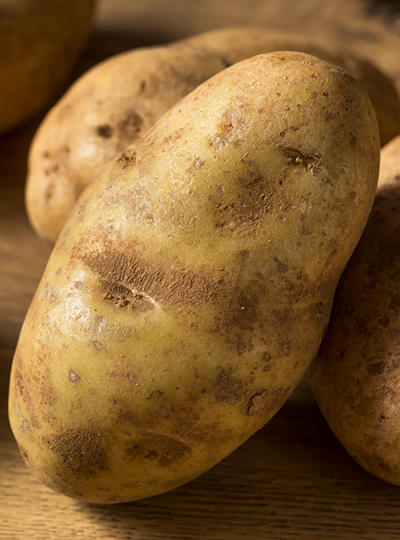
Not all potatoes are the same; their various types possess distinct characteristics that significantly impact how they cook. When it comes to achieving the perfect golden-brown, crispy fries, the choice of potato truly makes a difference. Our top pick for making fries is the russet potato, known for its high starch and low moisture content. These qualities make it an ideal candidate for frying, as the abundance of starch contributes to a crispy, golden-brown crust, while the low moisture content prevents the fries from becoming soggy or hollow.
Potatoes contain two types of starch: amylose and amylopectin, each playing a crucial role in the texture of the cooked fries. Amylose starch contributes to the crispy nature of fries by forming a rigid structure during the frying process. On the other hand, amylopectin starch is responsible for the softness of the fries.
The russet potato excels in this regard, as it contains a higher proportion of amylose and a lower proportion of amylopectin compared to other potato varieties. This composition makes russet potatoes the ideal choice for achieving crispier fries. The amylose starch content helps the fries retain their shape and structure during frying, while the reduced amylopectin content ensures that they do not become excessively soft or mushy. As a result, when you bite into a perfectly cooked russet potato fry, you experience a delightful combination of crispy exterior and fluffy interior.
Additionally, the low moisture content in russet potatoes is another factor contributing to their excellence in frying. During the frying process, moisture inside the potato can vaporize and create steam, which can lead to sogginess in the final product. However, the low moisture content in russet potatoes minimizes the amount of water escaping during frying, preventing the fries from losing their volume or shape. This further enhances the fry’s ability to attain that desired crispiness.
2. Soak, rinse, and pat.
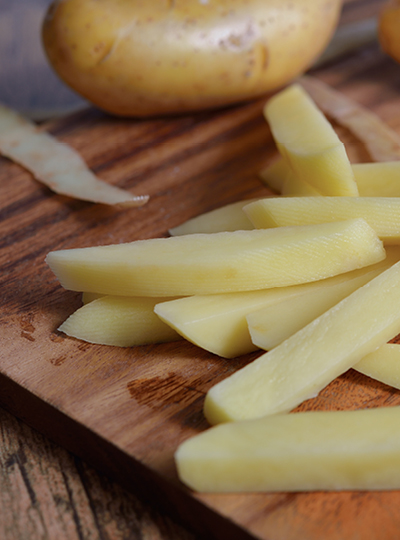
To prepare your potatoes for frying, start by slicing them into long strips of uniform thickness. As soon as you slice each potato, immediately place the slices in a bowl filled with cold water. This step is crucial because it prevents the potato slices from turning brown due to oxidation caused by exposure to oxygen. Soaking them right after cutting minimizes oxygen contact and keeps the fries looking fresh and appetizing.
After slicing all the potatoes, rinse them with cold water multiple times until the water runs clear. This process helps remove excess starch and sugars from the potato surfaces. While starch is essential for achieving crispy fries, an excessive amount of surface starch can lead to quick browning during frying, resulting in burnt, bitter, or soggy fries. By rinsing off the excess starch, you can achieve a better balance and control over the browning process, resulting in evenly cooked and beautifully golden fries.
Another advantage of rinsing the potatoes is that the cold water makes the potato cells firmer, leading to crispier fries when fried. When potatoes are cut and exposed to air, they release water and begin to soften. By rinsing them with cold water, you help the cells retain some of their firmness, ensuring a better texture in the final product.
Before frying the potatoes, make sure to dry them thoroughly with a paper towel or a clean cloth. Excess moisture can cause hot oil to splatter and can also hinder the fries from crisping up evenly. Patting them dry ensures that the oil adheres to the surface of the fries evenly, resulting in a more consistent golden color and crispy texture.
3. Choose the right oil for the job.
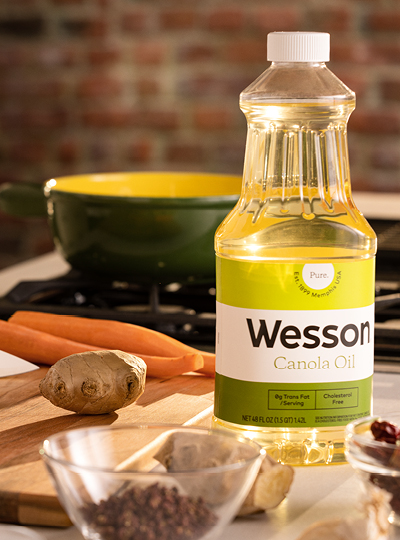
One of the secrets to achieving perfectly golden fries lies in the choice of frying oil. The oil used plays a significant role in determining the overall flavor and texture of the fries. For the best results, opt for an oil with a high smoke point and a neutral flavor that won’t overpower the taste of the fries. Though all Wesson Oils can achieve golden fries, our top pick is Wesson Canola Oil for making the perfect crispy fries.
Canola oil is an excellent choice for frying due to its high smoke point of 450°F. This means it can withstand the high temperatures of deep-frying without breaking down or smoking. As a result, you can achieve that crispy exterior without overcooking the fries.
Furthermore, canola oil has a low level of saturated fat, only 7%, making it a healthier option than other oils that have higher amounts of saturated fat, such as coconut oil or palm oil. The ability to cook your fries at a high temperature ensures they come out golden and crispy on the outside, while remaining soft and fluffy on the inside. Plus, you can enjoy them without worrying about adding too much unhealthy fat to your diet.
4. Fry your fries twice.
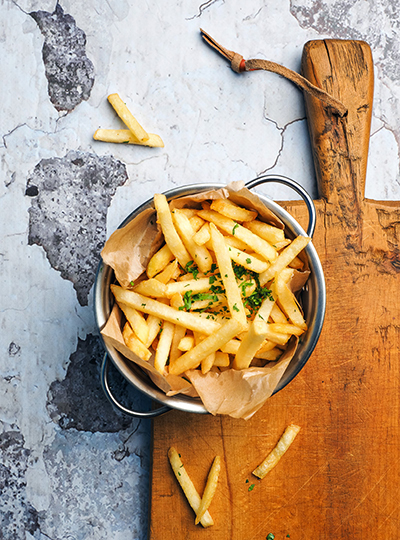
The trick to achieving the perfect fry is to fry them twice. The first frying is done at a lower temperature of 250°F to 275°F, blanching the fries and making them softer and fluffier inside. This preliminary frying process sets the foundation for crispiness later on. It helps remove some of the surface starch and moisture from the fries, which will contribute to achieving that desired crispiness during the second frying.
After the first frying, the fries will appear pale and limp, which may might not seem particularly appetizing at this stage. However, this is entirely normal and expected. They are only halfway cooked and require a second frying to reach their full potential. Allow the fries to cool completely before the second frying, which can be done either in advance or just before serving.
The second frying is the critical step that transforms potatoes into perfectly golden, crispy fries. For the second time around, the fries are cooked at a higher temperature of around 350°F for 3 to 4 minutes. The use high heat cooks the outer layer of the fries to a nice golden brown while crisping them, sealing in the moisture and flavor inside. After the second frying, carefully remove the fries from the hot oil and drain them on paper towels to absorb any excess oil. Season as desired and dig into a basket of perfectly cooked homemade fries.

